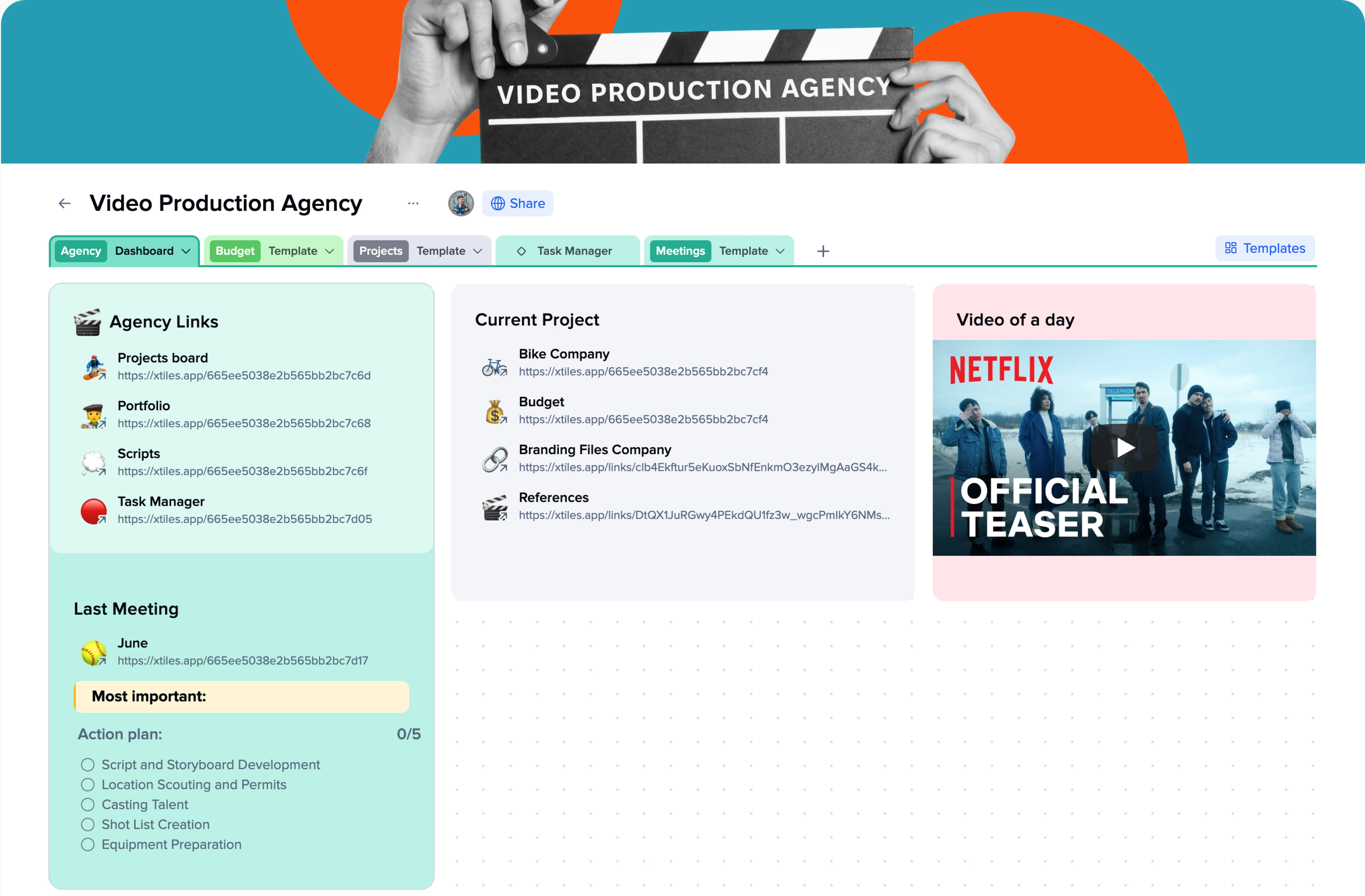This free video production template streamlines the video production process, enhances team collaboration, and ensures consistency across different projects by providing a customizable structure for project tracking, task management, and documentation.





